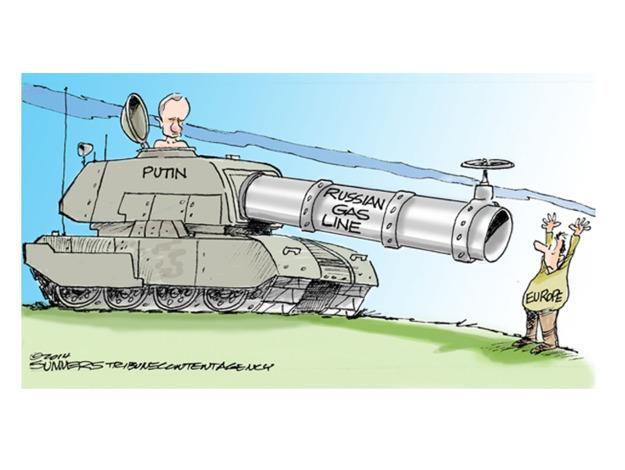
RUSSIA & EUROPE GAS

In her analysis of pipelines routes and projects for meeting the demand of countries in the Balkans and South-eastern Europe at the European Gas Conference, Daria Nochevnik, EU Energy Regulatory Affairs and Strategic Analysis Specialist and Deputy Head of the Greek Energy Forum's Brussels Division, immediately points to some key energy projects: Southern Gas Corridor designed to bring Azeri gas from the Shah Deniz gas field to Europe; the second upgrade phase of the Revithoussa LNG terminal in Greece and the Krk LNG terminal in Croatia; East Mediterranean energy corridor; as well as the interconnectors that enable bi-directional flows of natural gas. Arguably, she says, "those projects gained a new momentum after the cancellation of the South Stream in its original form was announced by Russia in December 2015, and the metamorphosis of the South Stream into the so-called Turkish Stream took place."
Ms. Nochevnik offered her insights to Natural Gas Europe.
Natural Gas Europe (NGE): How viable do you think the Turkish Stream project actually is?
Currently the project is moving forward, as Moscow and Ankara have signed the MoU, approved the new pipeline route and agreed upon the 10.25% gas discount for Turkey. On the EU side there are many questions, including the one on infrastructure that would have to be in place to transport gas from the Turkish-Greek border, envisaged as the new pipeline’s gas delivery point. At the same time, there are some talks regarding lobbying by some Eastern European Countries for South Stream’s revival, and calls for dialogue between Vice-President Šefčovič and the Russian counterparts on re-launching the projects, which so far seems highly improbable. Provided that the project is officially cancelled and the Turkish Stream launched, Russia would also have to revise its long-term transit contracts with the European counterparts, which are supposed to last till the 2020s.
How would you describe the energy security situation for countries in Southeastern Europe?
Drawing on the gas crises of 2006 and 2009, the fears of gas cut offs this year were dominating the media. However, in reality most of the gas storage sites were full at record-high levels, and most importantly, the agreement between the EU, Russia and Ukraine on gas transit - the so-called winter package – was reached in October and will be lasting till May.
At the same time, the consequences of the decisive change in Russia’s energy strategy have to be considered in the long run: the cancellation of South Stream should therefore to be seen in combination with the fact that Gazprom cancelled the joint venture with Wintershall, as well as stopped bidding for the 100% share in Opal.
Moving away from the external dimension of energy security, one of the issues to be tackled in the region is the existence of the ‘energy islands’. Significant efforts have to be made to bring to life the planned interconnectors with bi-directional gas flows between the natural gas markets in the region, as well as to realize other PCIs, such as the upgrade of the Revithoussa LNG terminal, which would ensure supplying spare gas to SEE.
Development of the indigenous resources in the region constitutes another element of the energy security paradigm. The potential of Romania, Greece and Croatia is particularly notable in this context, as well as the upstream activities in the Levant basin.
Another part of the equation, which is often overlooked, is energy affordability, that goes beyond the discussion about the gas markets in the region, but constitutes a crucial element of energy security. According to the latest report of the Commission, in the 3rd quarter of 2014 Greece had the most expensive power market, while in Romania for example, the lowest prices in the CEE region were observed. Overall, in order to increase interconnection of the regional power systems in South-East Europe, over 10 billion EUR have be invested in power transmission projects, as the ENTSO-E estimates.
The understanding of energy security of the region and beyond should certainly not be reduced to the situation on the market of a single commodity – we have to look at the energy system in total.
How crucial do you think Russian gas supplies will be for the Black Sea area going forward? What will be key to mitigating tensions in connection with that?
Clearly, Russian gas supplies will remain important for the countries in the Black Sea region. However, the geopolitics of energy relations with Russia is very different across the countries in the area. While Romania is the least dependent on Russian supplies, Bulgaria relies almost exclusively on those, while experiencing the lack of interconnection with the neighboring gas markets.
In the case of Turkey, current geopolitical developments definitely play in its favor, and gas supplies from Russia will not only help meeting the growing domestic demand, but also reinforce Turkey’s strategic position in the region.
When it comes to Ukraine, the situation is dramatically different. Although the first reverse-flows have been established and Ukraine has already experienced getting the so-called second hand Russian gas from Slovakia, it could only supply some 20% of country’s demand. At the same time, under the current circumstances in the country, and due to current fiscal and legal policy of the new government, companies have to put all the upstream activities on hold.
Mitigating the tensions associated with Ukraine’s energy dependence on Russia is possible only in the context of a broader political dialogue.
naturalgaseurope.com





